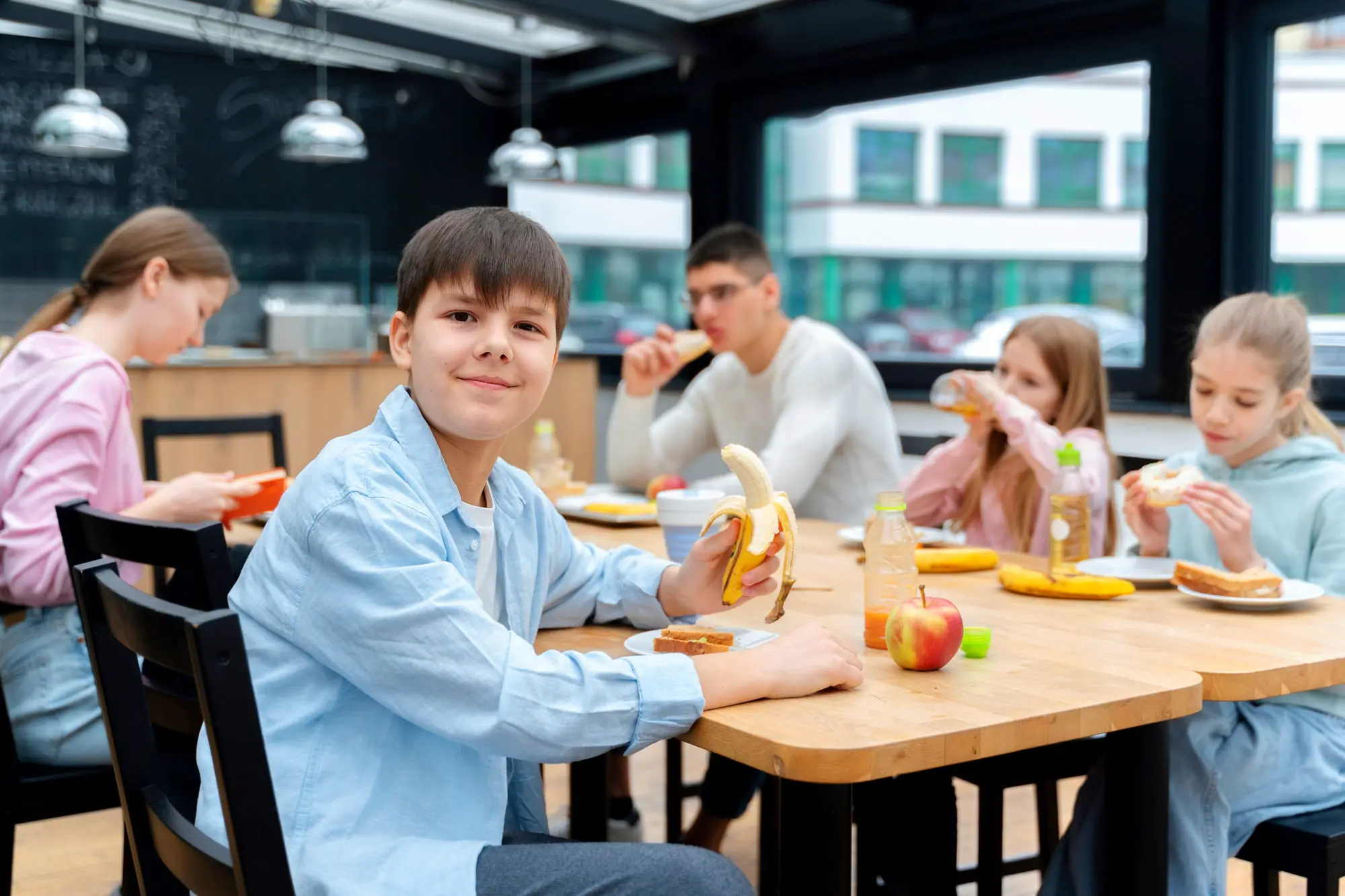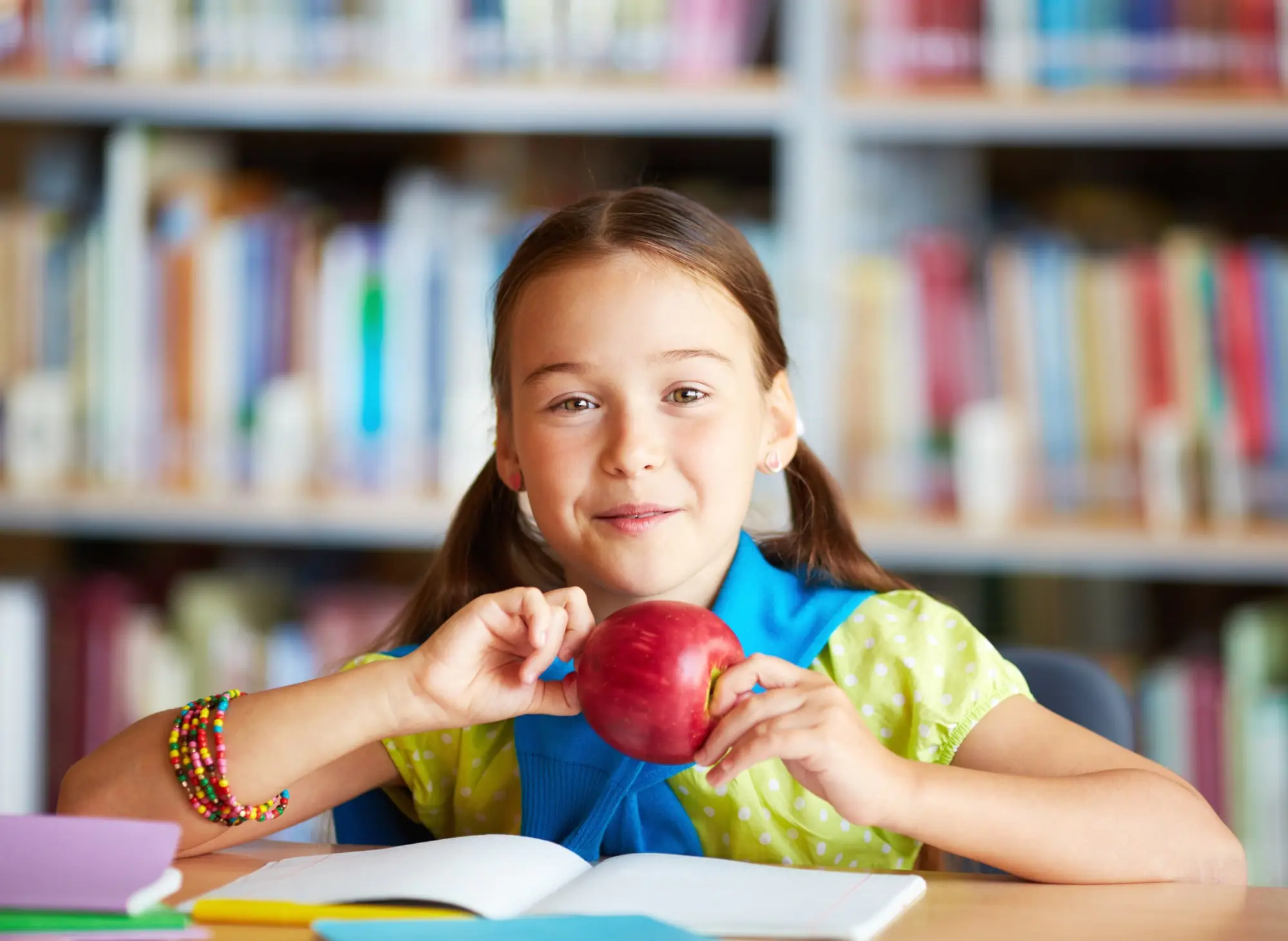What are the Nutrition Recommendations for School?
As a new school year begins, taking care of your children’s healthy diet is essential to support both their physical and academic success.
A balanced and growth-promoting diet has a positive impact on children’s energy levels, focus capacity and overall health, as well as helping them develop healthy living habits for the long term.
Here are some school nutrition tips to consider during this process and how you can guide your children to make healthy choices.
What are the School Lunchbox Menus?
Preparing your child’s lunchbox together is a great way to introduce them to healthy food alternatives.
It is also important to involve them in the process to enable them to make informed choices.
When preparing a lunchbox, aim to provide a balanced meal.
Plan to cover all the food groups that children need.
Here are some balanced and nutritious school lunchbox menus:
- Menu-1: Whole grain sandwich (with cheese and smoked turkey), carrot sticks, yogurt, apple slices
- Menu 2: Chicken with vegetables in whole grain lavash/sandwich bread, grapes, walnuts, ayran
- Menu 3: Pasta salad (with chicken/kofta/cheese, olive oil, fresh vegetables), nuts, plain kefir, banana

What should be in the school lunchbox
Here’s what should be included in a school lunch list:
- Protein Sources: Protein-rich foods such as eggs, chicken, turkey or cheese support muscle development and keep children full for longer.
Plant proteins such as chickpeas, lentils or beans can also be a healthy alternative. - Whole Grains: Instead of white bread or refined grains, choose healthier options such as whole grain bread, wholemeal pasta or bulgur.
Whole grains give children energy and support digestion. - Vegetables and Fruits: Fresh fruits and vegetables are rich in vitamins, minerals and fiber.
Choose easily portable snacks such as apple slices, carrot sticks or cucumbers.
Choosing colorful vegetables and fruits can keep children interested. - Milk Products: Calcium-rich foods such as milk, yogurt or buttermilk support children’s bone development.
Avoid sweetened drinks; natural options such as plain milk or homemade buttermilk are better. - Nuts and Seeds: Nuts such as hazelnuts, walnuts or almonds contain healthy fats and protein.
However, check your child’s school rules for allergy risks.
Practical Alternatives for Breakfast
Breakfast is the most important meal for children to start the day energized and fresh.
Here are some practical and nutritious school breakfast suggestions that you can prepare quickly:
- Oatmeal/plain cereal: Oats mixed with milk or yogurt, topped with fresh fruit and nuts.
- Whole grain toast/sandwich: A hearty option with whole wheat bread, cheese and a side of fresh fruit.
- Smoothie: A smoothie made with milk, yogurt, fresh fruit and a handful of oats can be a nutritious and practical breakfast alternative.
Portable Menu Options for Lunch
It is important that children eat a healthy lunch at school.
Choosing healthy meals at school should be supported by education at home.
Parents should set an example by consuming healthy foods at home and raise their children’s awareness about making healthy choices.
You can review the weekly menu to see if your child is eating a balanced meal and identify healthy alternatives from the menu or canteen options together with your child.
You can reinforce their behavior by chatting about the meals on the menu and encouraging them with small rewards when they make healthy choices.
Also, make your children aware of the fact that canteens can often offer processed foods or sugary snacks.
Explain to them that healthy alternatives are both more nutritious and energizing in the long run.
Here are some portable lunch options:
- Whole grain sandwiches: You can add chicken, cheese, eggs or turkey.
These simple school lunch recipes are both portable and healthy. - Pasta or bulgur salad: A salad with olive oil, vegetables and a protein source can be a filling and portable lunch alternative.
- Lunch boxes: Boxes with small compartments filled with vegetables, fruit, cheese and nuts ensure that children have a varied and balanced meal at lunchtime.
Nutritious and Hearty Menu Ideas for Kids
It is important that children get the nutrients they need during their rapid growth.
Here are some nutritious and filling menu ideas for your children:
- Grilled chicken/ meatballs/ meat, pasta/ bulgur and fresh vegetables: This combination offers both protein and vitamin-rich options.
- Pancakes/Omelettes: Pancakes and omelettes can be a fun option for children, as they can be decorated with vegetables, fruits and healthy fats such as nuts.
- Homemade hamburgers/pizza/doner/sandwiches: You can provide a balanced meal for children when you prepare the food that they usually prefer as fast food at home and serve it with salad and yogurt.
Vitamin Depot Snack Recipes
Here are some vitamin-packed school snack alternatives:
- Vegetable dips: Serve hummus or yogurt-based dips with vegetables such as carrots, cucumber and peppers.
- Fruit yogurt: Made with plain yogurt, fresh fruit slices and chia seeds, this recipe can be both a sweet and healthy snack.
- Mix of nuts and dried fruit: Mixtures of nuts, walnuts, dried apricots and raisins will meet your child’s energy needs.
- Whole grain crackers with hazelnut/peanut butter
- Fruit and chia puddings
Nutrition Planning in the School Period
Establishing a set mealtime routine at home and making mealtimes regular and predictable helps children develop healthy eating habits.
At dinner, you can plan a balanced meal, taking into account what your child has eaten during the day.
Home-cooked meals have a positive impact on your child’s diet.
Eating dinner together and making this time enjoyable strengthens family bonds beyond healthy eating habits.
By planning balanced meals for each day, you can help your child meet all the food groups they need.
- Make a shopping list together at the beginning of the week and get all the supplies you will use during the week.
- Diversify the weekly menu.
Create a menu that is not boring by balancing different food groups.
Weekly Menu Creation
Here is a sample weekly menu:
- Monday: Toast with whole grain cheese, apple slices with pistachios, buttermilk.
- Tuesday: Salad with grilled chicken, whole grain crackers, yogurt, grapes.
- Wednesday: Cheese sandwich, carrot sticks, fruit milk.
- Thursday: Pasta salad with whole grain meatballs, almonds, plain kefir.
- Friday: Hummus and vegetable slices, whole grain lavash, banana.
Safe Food Handling Methods
Keeping foods at the right temperature helps them retain their freshness and nutritional value.
Heat-resistant containers ensure safe transportation of food.
Using Heat Resistant Containers
At the same time, these containers preserve the freshness of food and prevent hot meals from getting cold.
Avoiding Processed Foods
Such foods can negatively affect children’s health as they contain high levels of sugar, salt and unhealthy fats.
Excess sugar consumption can negatively affect children’s energy levels and lead to weight gain and dental problems in the long run.
Therefore, you should opt for healthy snacks made at home instead of processed foods.
Adequate Fluid Consumption
Adequate water consumption keeps the body functioning properly, maintains energy levels and improves their ability to focus.
Here are a few tips to get children into the habit of drinking water:
- Carrying a Water Bottle: Make sure your child always has a water bottle with them.
This encourages them to drink enough water at school and outside. - Enhance the taste of water: If your child does not like drinking water, you can make it more appealing by adding fresh fruit slices (lemon, orange, mint) to the water.
- Make Water Consumption Fun: You can set water consumption goals with your child and motivate them by giving them small rewards for completing each goal.
The Contribution of Nutrition to School Success in Children
Adequate nutritional intake increases focus, strengthens memory and improves learning ability.
Breakfast in particular provides a good start to the day.
Research shows that children who eat breakfast are more successful at school.
Providing nutritious foods such as whole grains, milk and fresh fruit at breakfast helps keep children energized and focused throughout the day.





